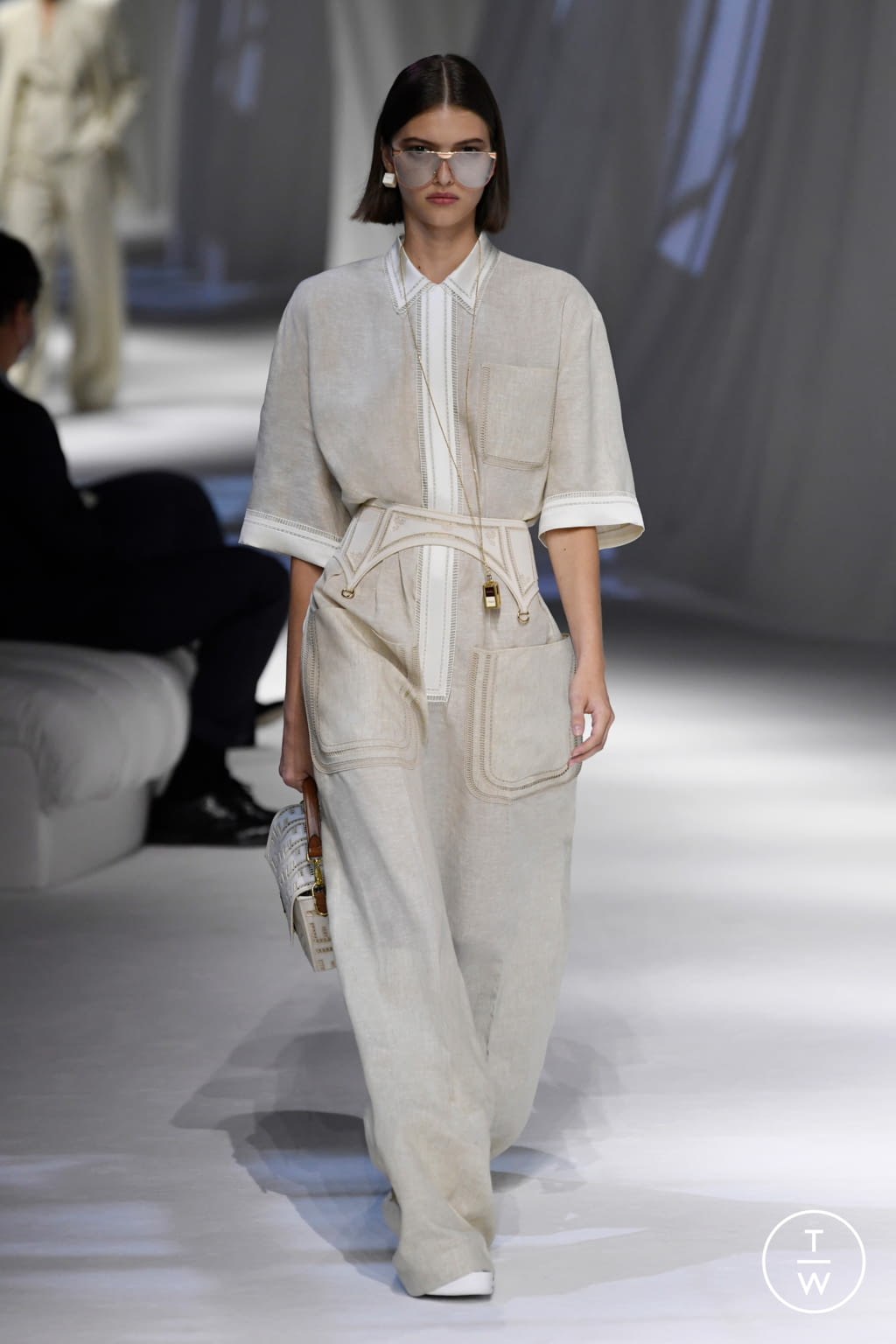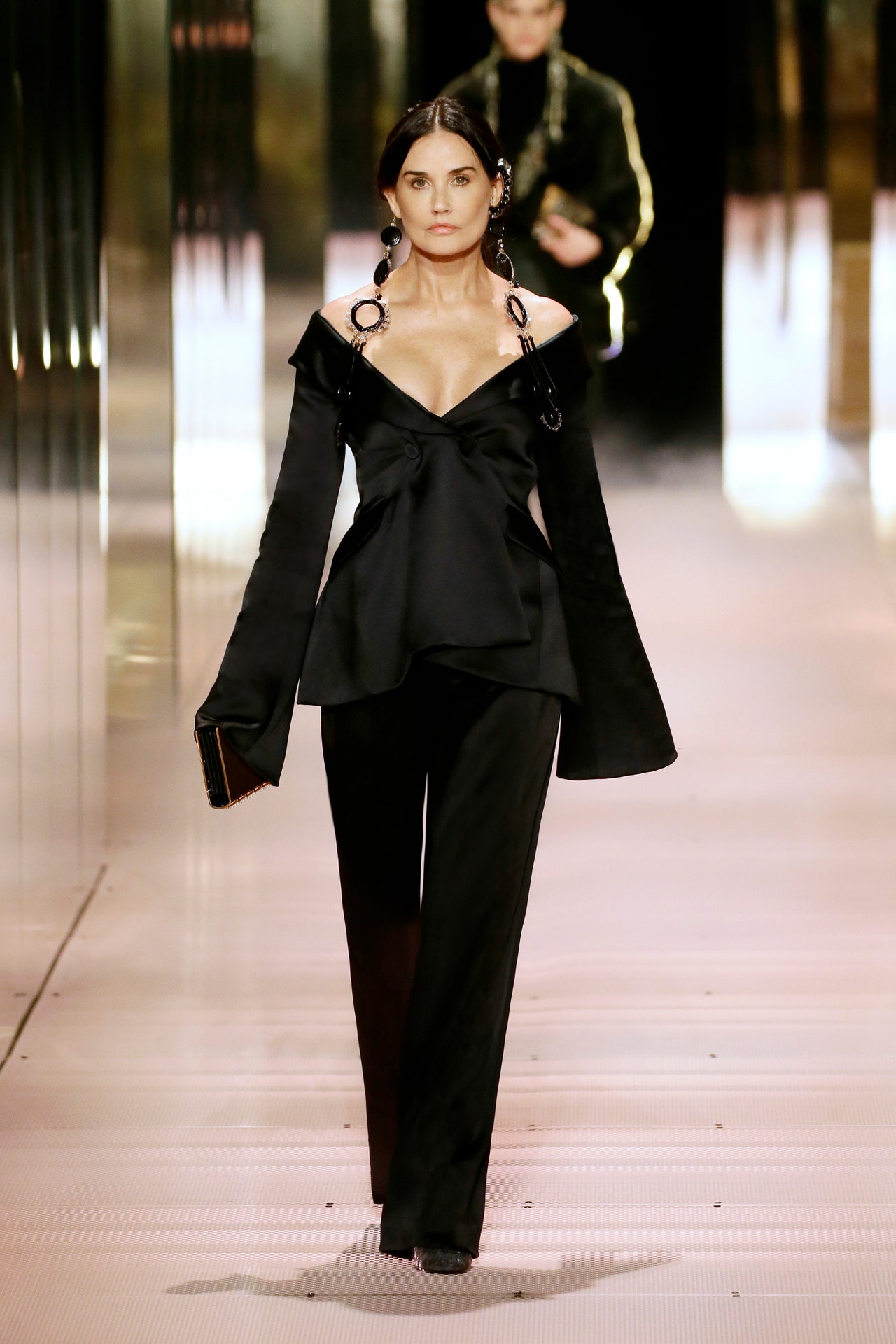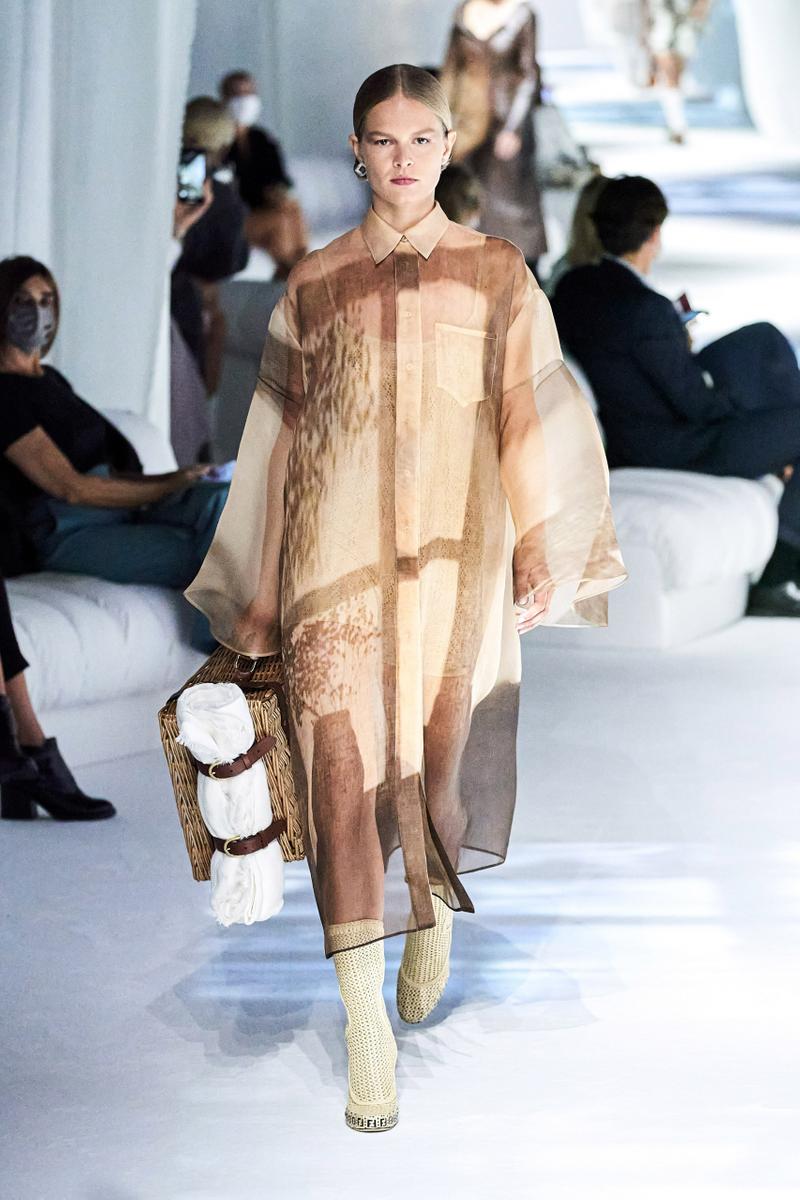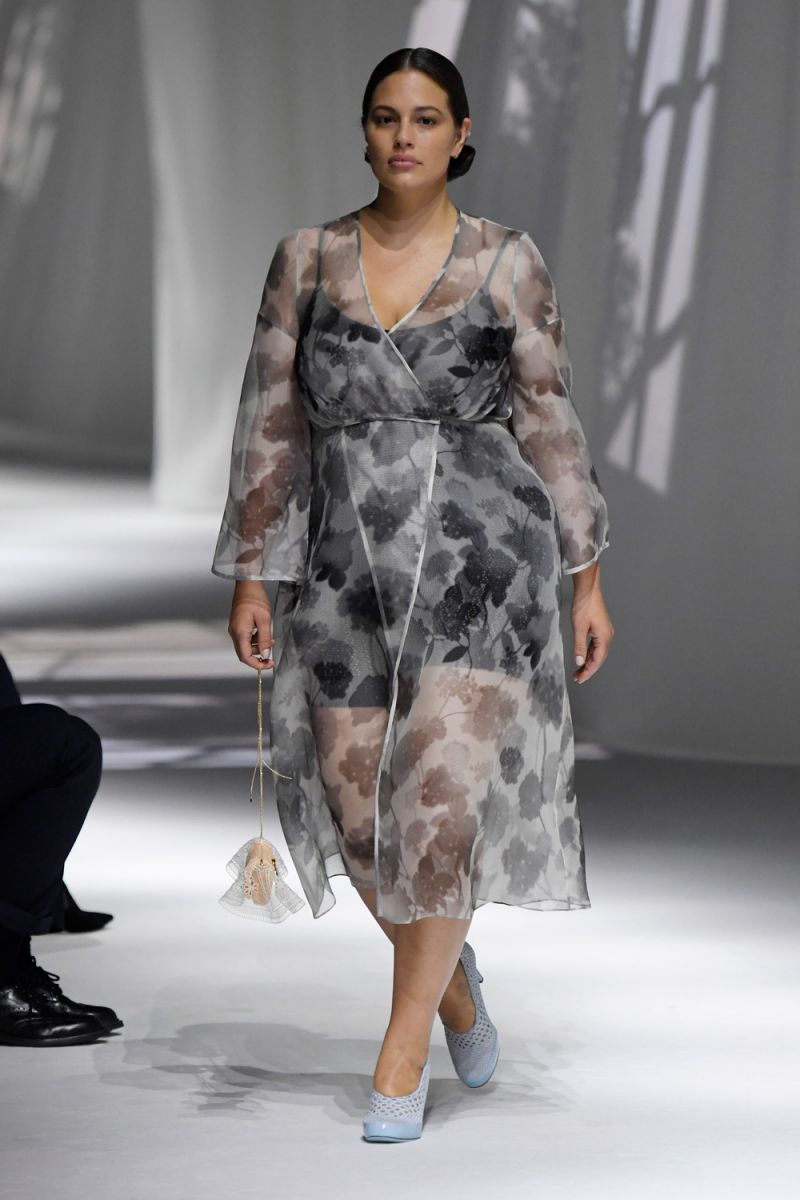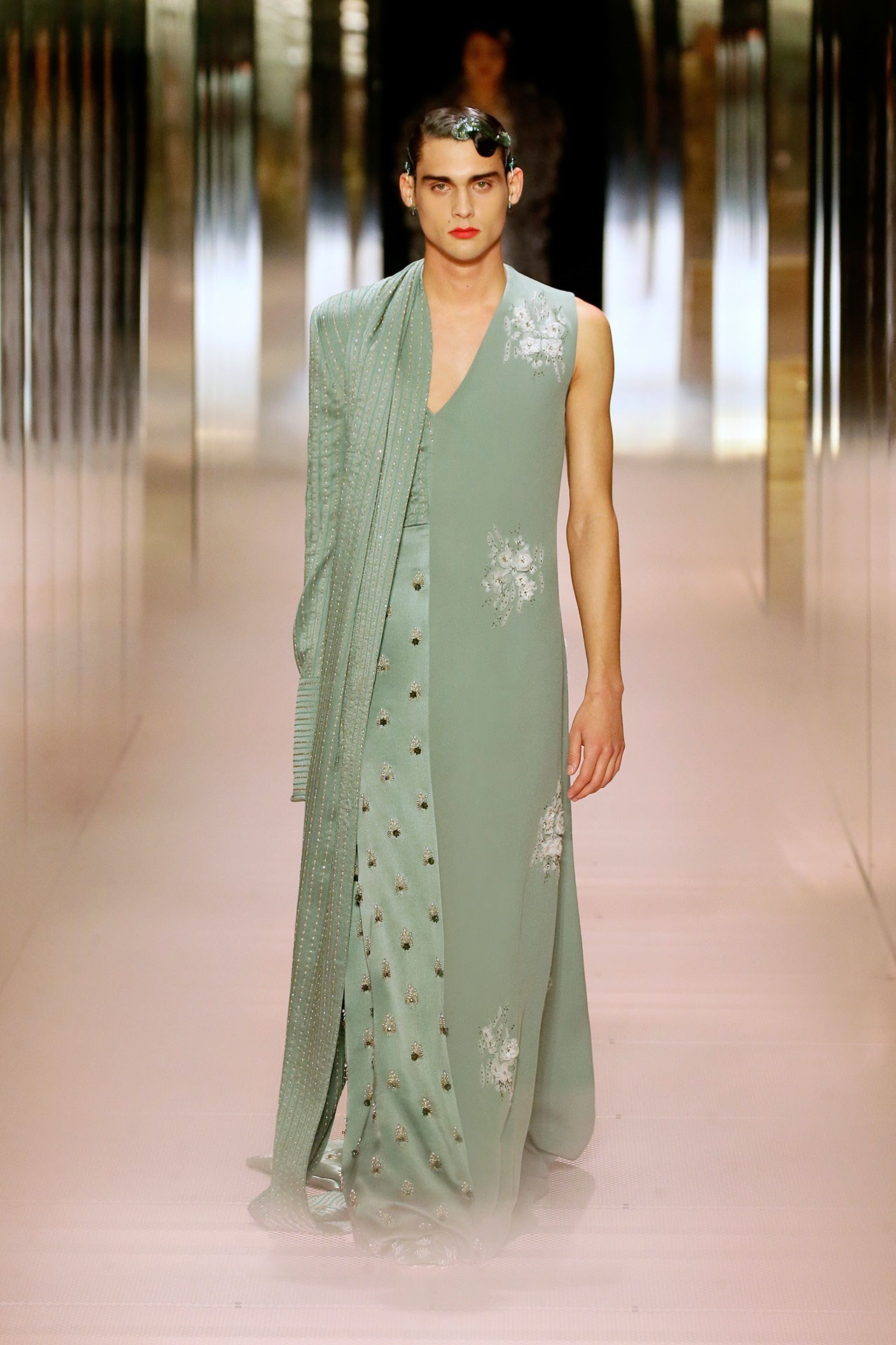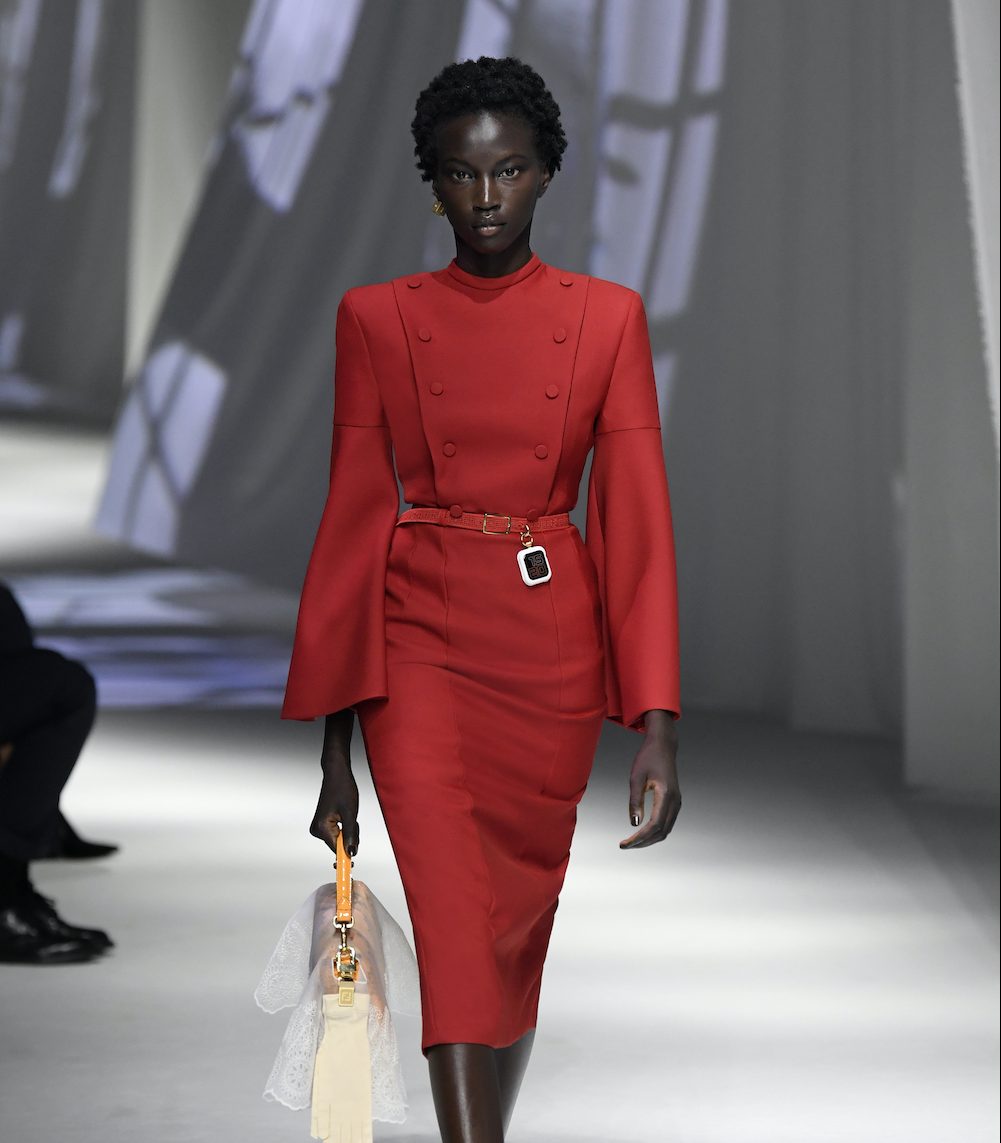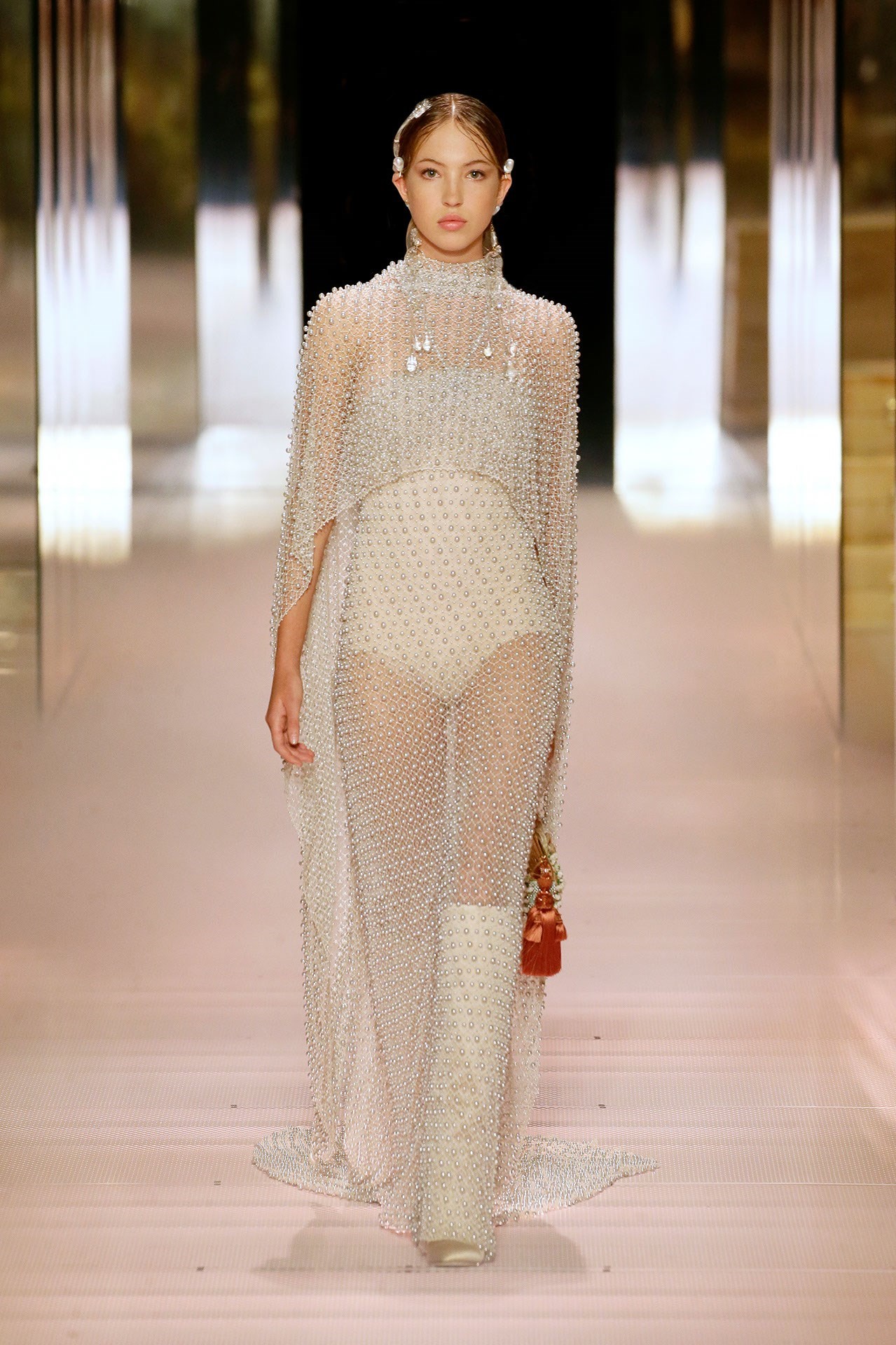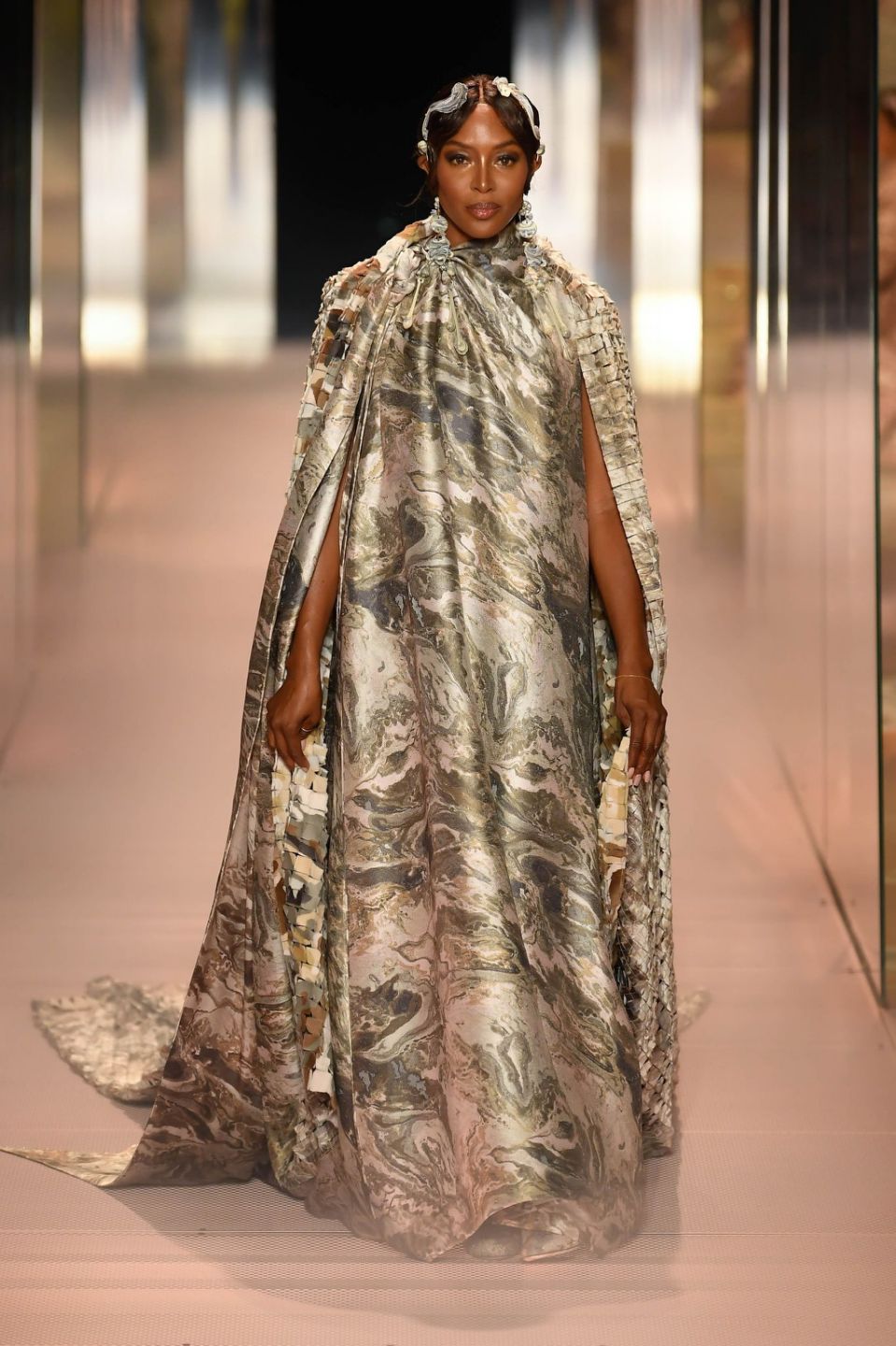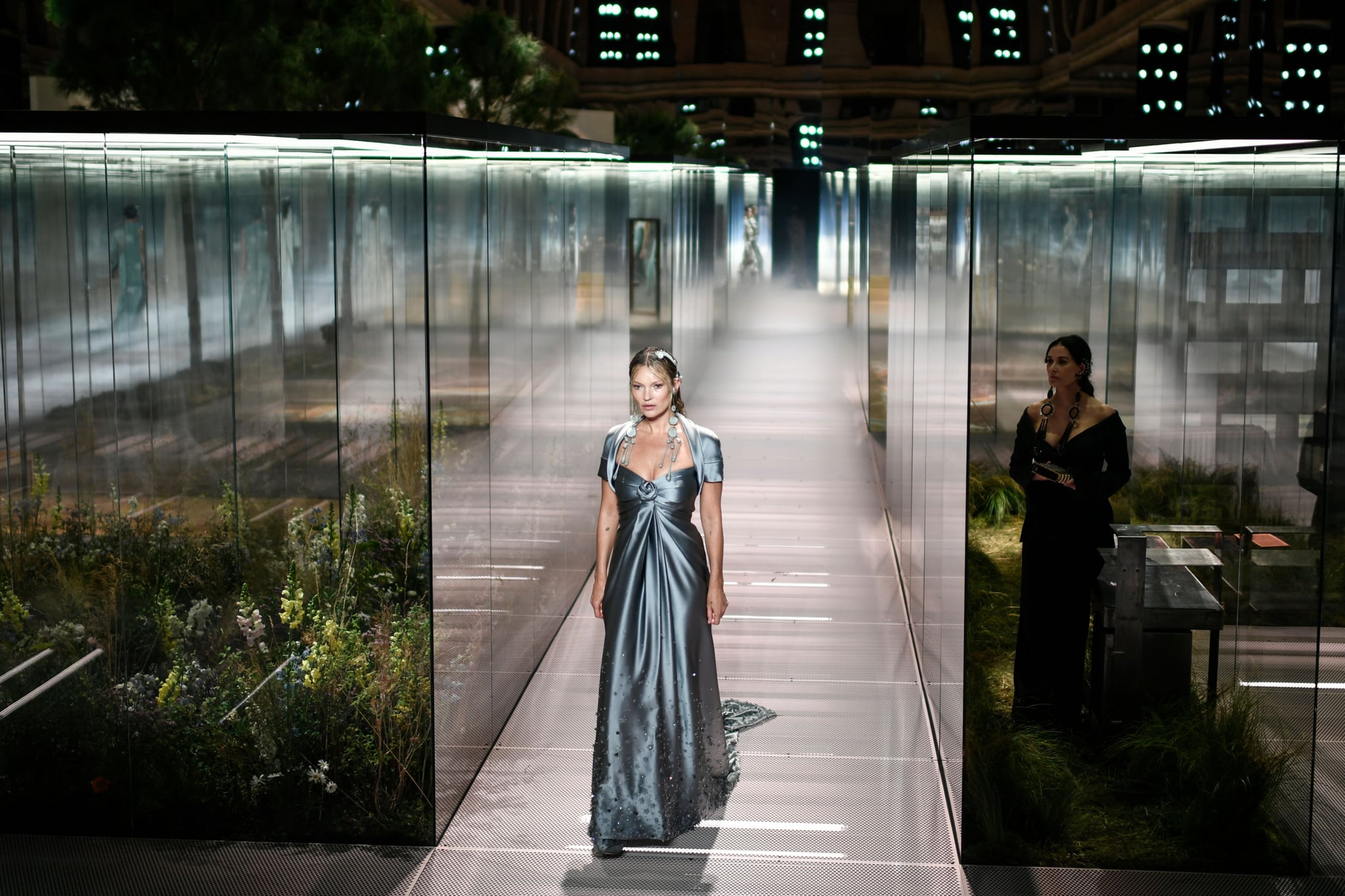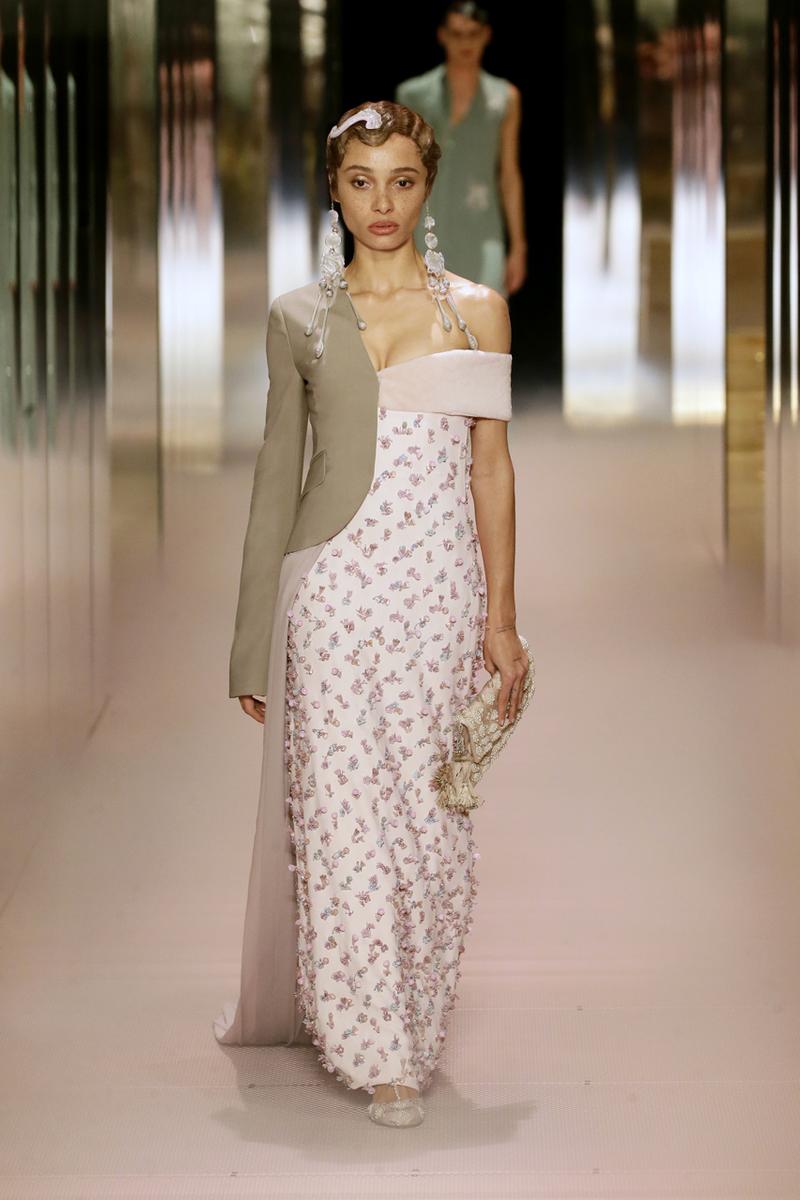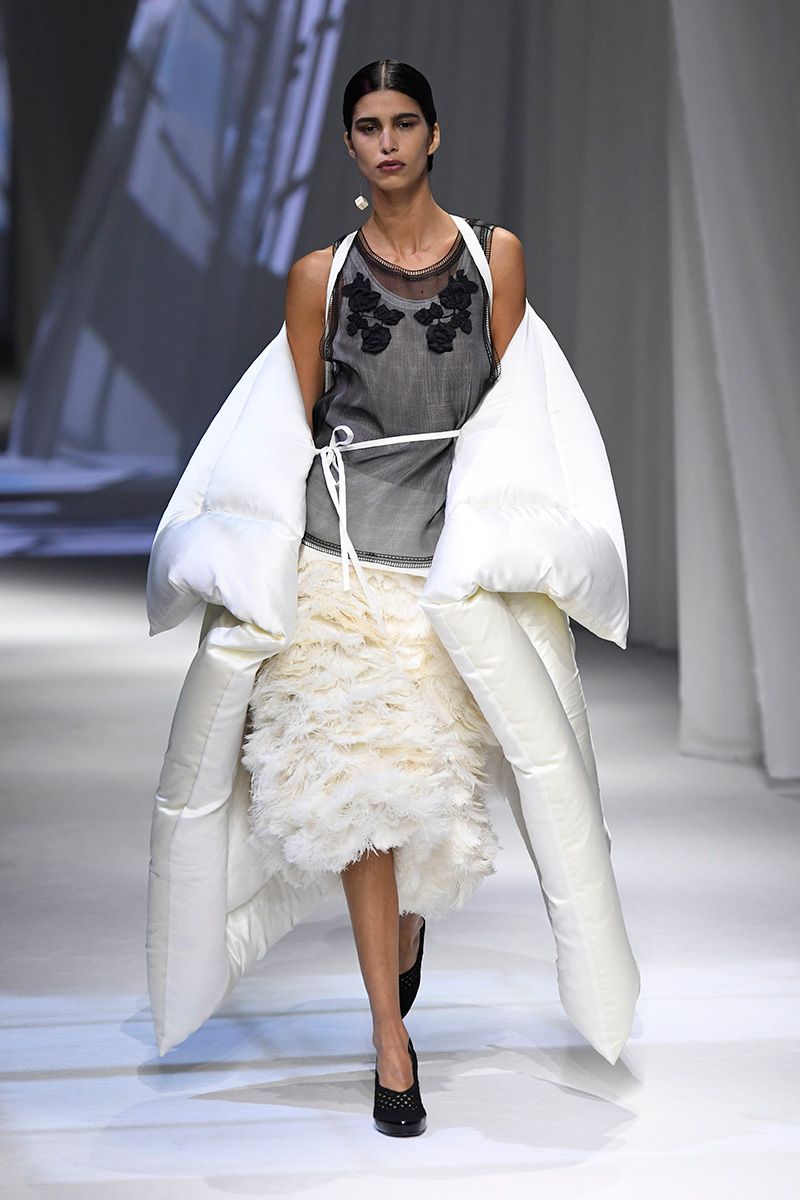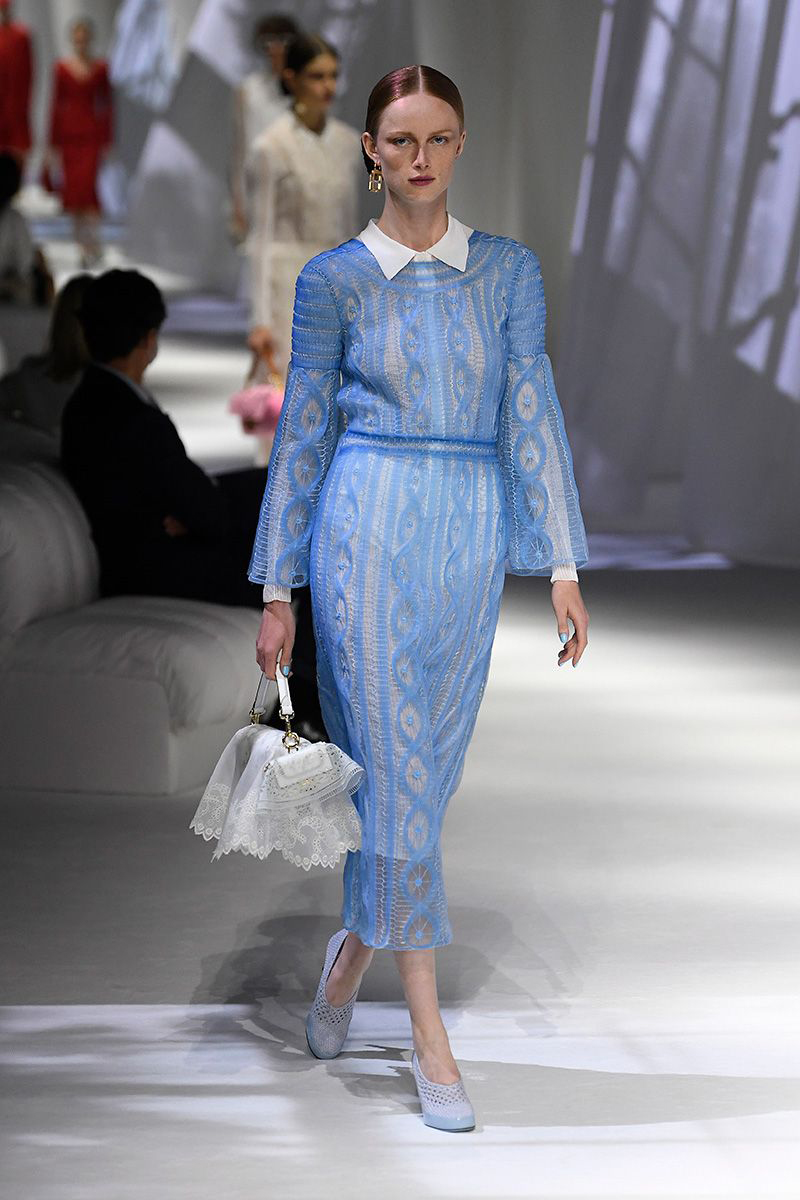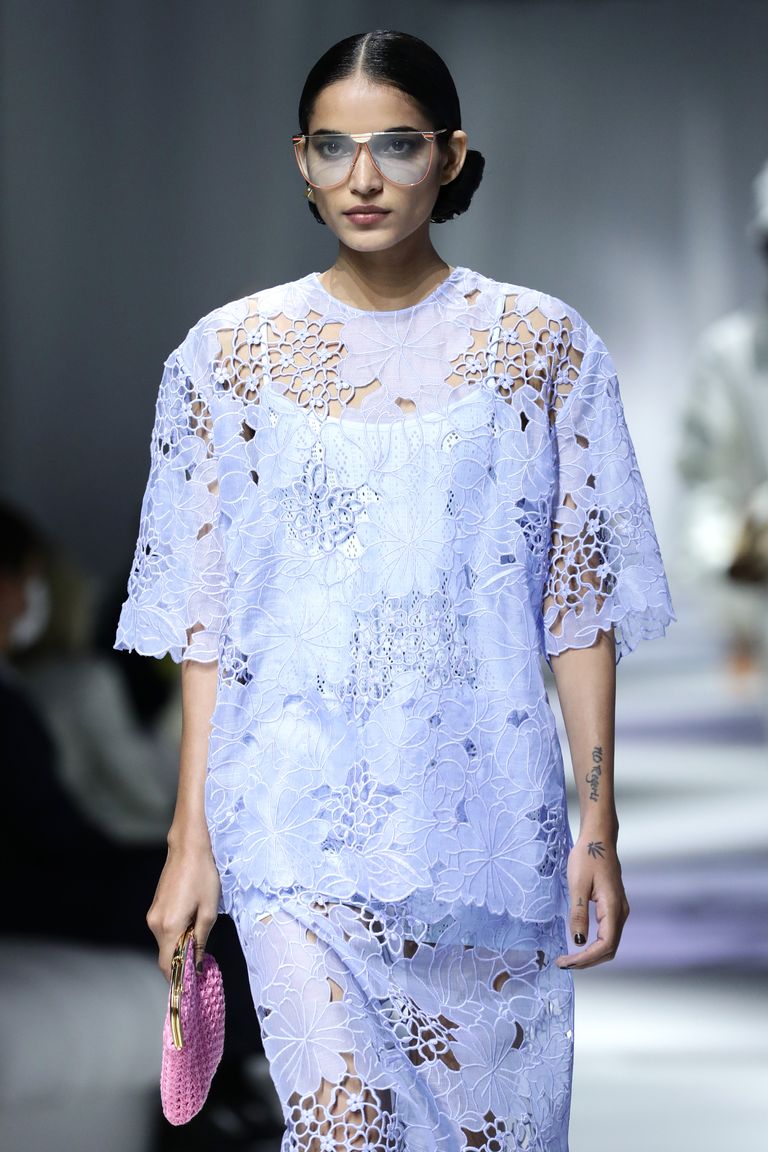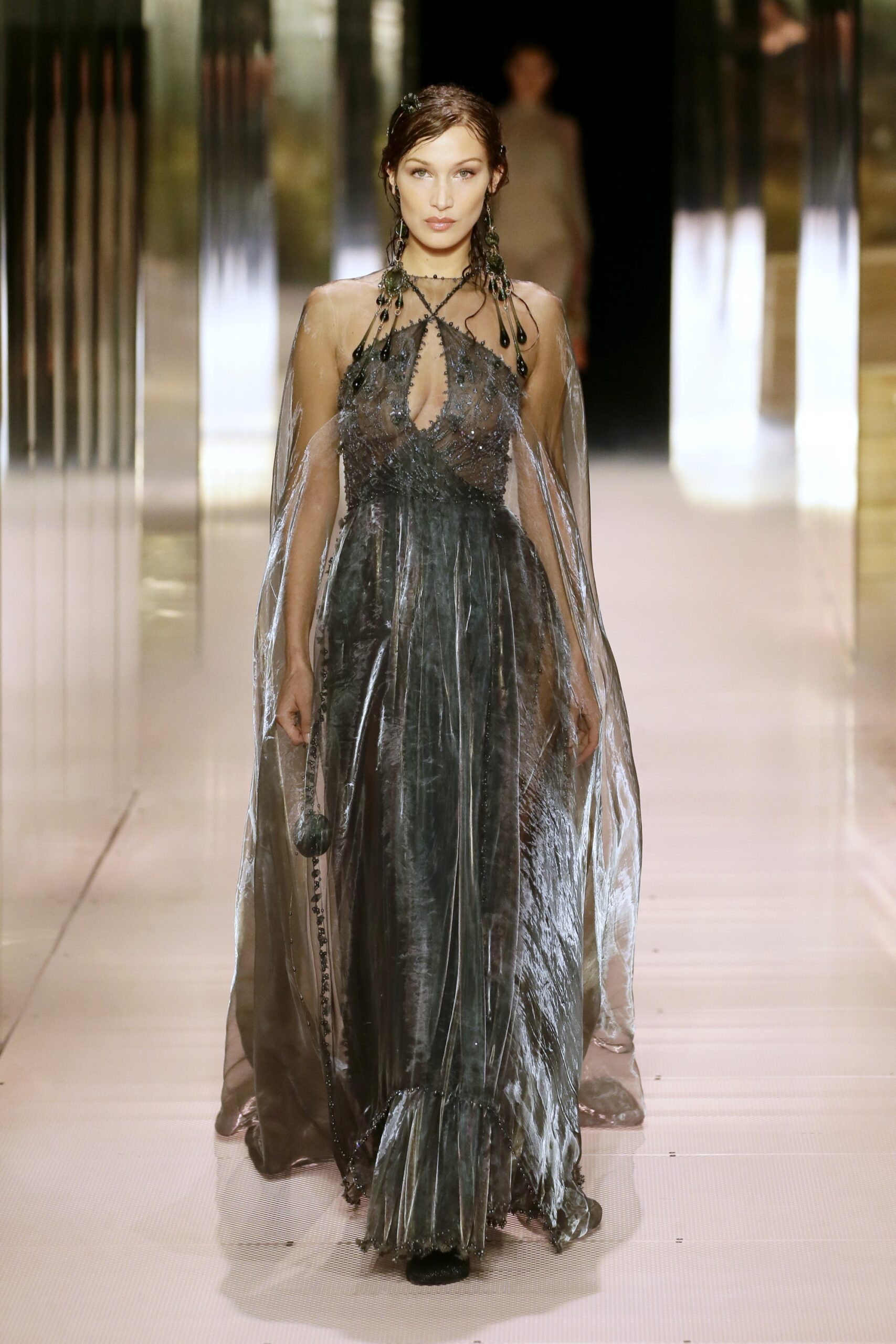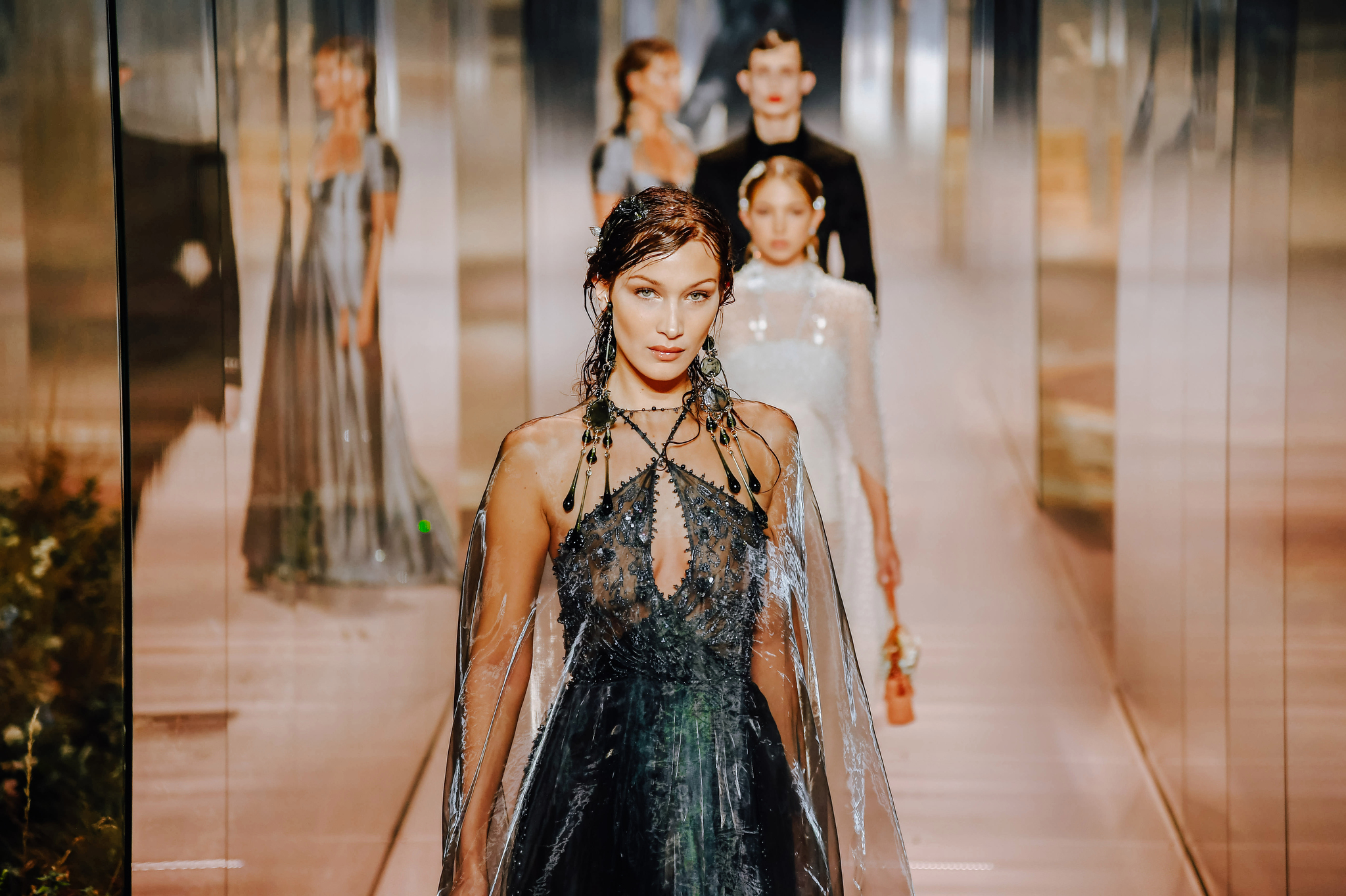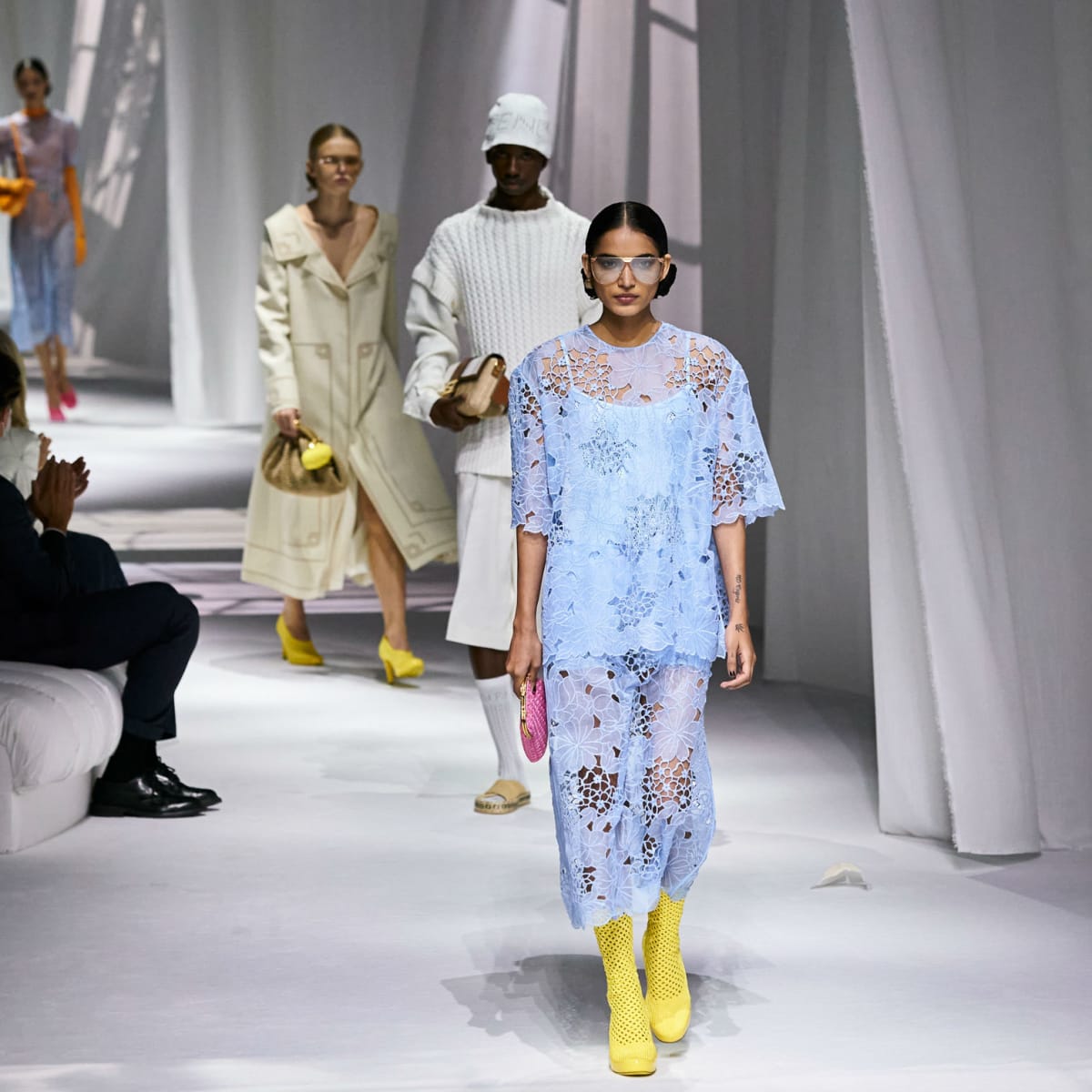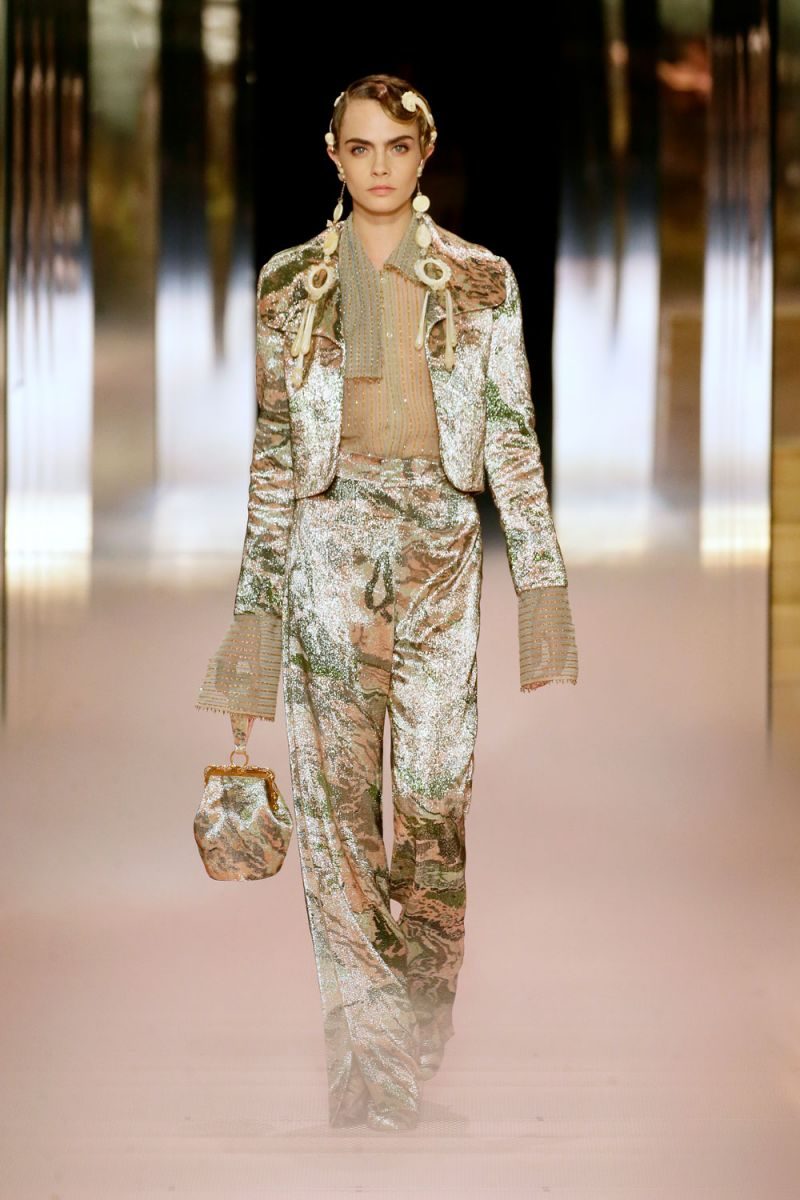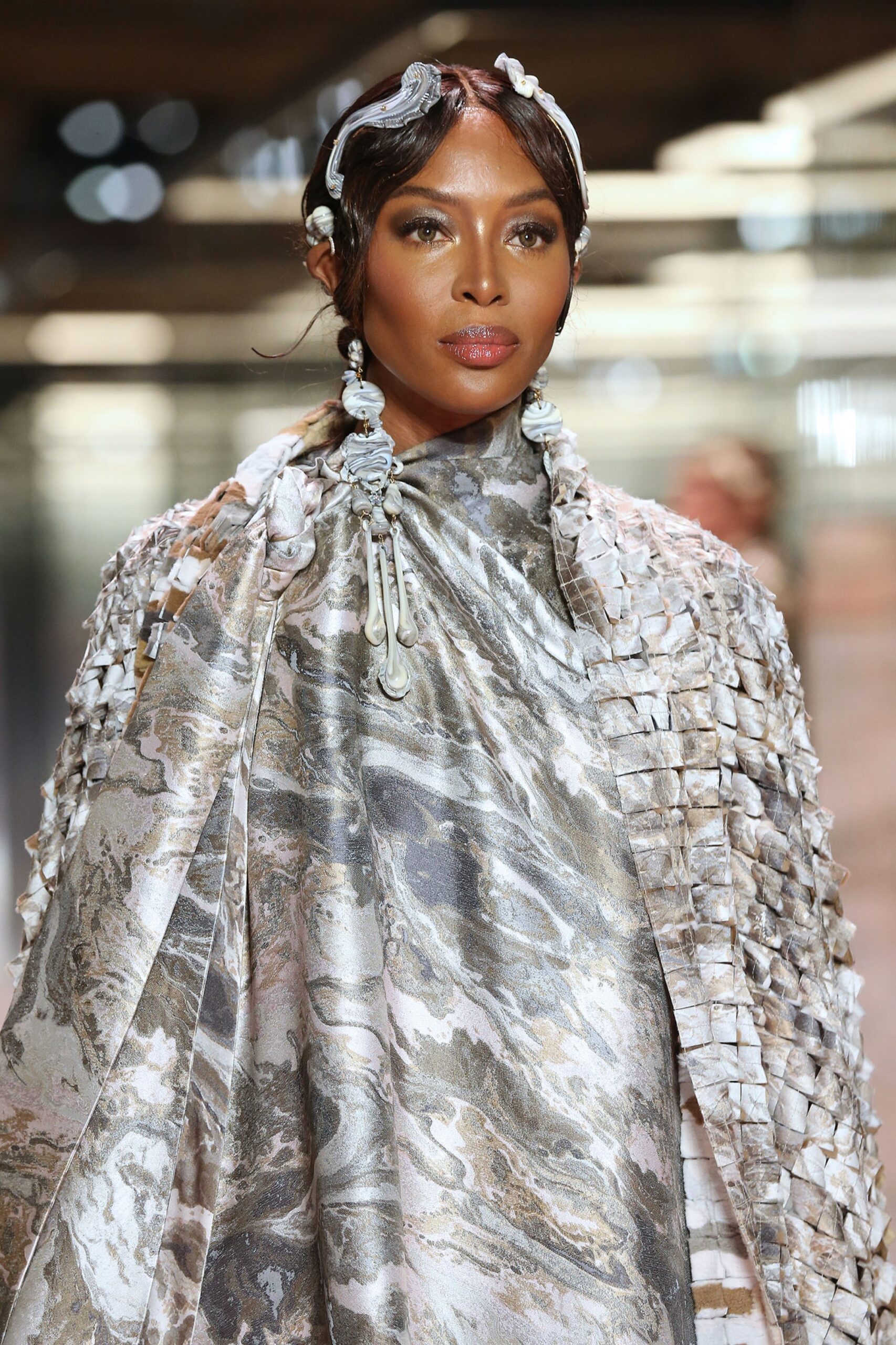Not only is this the first Spring/Summer Couture collection Fendi has presented, having stuck with “Haute Couture ” in the past, but prior to this Jones had never made a full women’s collection or designed couture
The long awaited Fendi Spring/Summer 2021 Haute Couture Collection finally debuted at Palais Brongniart for Paris Haute Couture Week. While it was a star studded event with models Naomi Campbell, Kate Moss, Bella Hadid, Cara Delevingne, and Christy Turlington, adorning the runway, everyone’s eyes were truly all on Kim Jones, the newly appointed artistic director of couture and womenswear for Fendi.
Not only is this a tough role to fill following the famous Karl Lagerfeld, who held this position for 54 years, but it also marked a series of firsts for Jones. Not only is this the first Spring/Summer Couture collection Fendi has presented, having stuck with “haute fourrure” in the past, but prior to this Jones had never made a full women’s collection or designed couture. That is not to say that his reputation as a talented menswear designer did not precede him. He first and foremost was director of menswear to Louis Vuitton. It was there in 2017 where Jones was responsible for the unofficial new age of fashion when he produced the collaboration with Supreme. Following that position he held a three year tenure as artistic director of menswear at Dior where he managed to meld feminine elegance and bold tailoring. Today’s collection reads similar, having an overall theme of romantic androgyny.
Set in an almost dreamlike world, models walked with purpose down a foggy runway while surrounded by a maze of glass boxes, each representing the essence of a home, fit with trees and marble carpet like patterning. The collection was wrought with regal fluidity. Not just from a gender standpoint but in the movement. Déshabillé draped dresses flowed with liquidity but hand embroidery and marble like adornments weighed them down. A truly breathtaking fabric technique by the Couture ateliers. When an element in the collection wasn’t gliding by romantically, it was strongly tailored and structured. Or in some cases had elements of both, most notably the half-suit, half-evening gown look in honor of Mr. Lagerfeld’s sketch from 1993.
This celebration into womenswear for Jones not only harps on the strong, intelligent woman but makes a statement introducing gender nonspecific pieces at its core. Being closely surrounding by a group of pioneering women himself like Kate Moss, who consulted on accessories, stylist Melanie Ward, art director Ronnie Cooke Newhouse, and Ms. Fendi and her daughter, Delfin it is no question that Jones’ collection was able to appeal greatly to the female desire. This newfound outlook of design for the Fashion House is only the beginning for Fendi’s collections to come.


